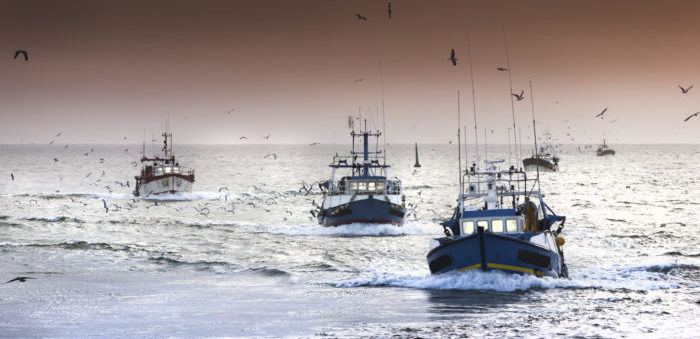New research displays intentional disabling of automatic identification system devices to provide insights into illegal, unreported and unregulated fishing activity.

A new analysis harnesses automatic identification system, or AIS, data to provide information about global fishing activity, including illegal, unreported and unregulated fishing
The new study, “Hotspots of Unseen Fishing Vessels,” was published November 2 in Science Advances and presents the first global dataset of AIS disabling in commercial fisheries, which obscures up to 6 percent of vessel activity.
Lead author, Heather Welch, a project scientist in the Institute of Marine Sciences at the University of California, Santa Cruz (UCSC), worked on the study with researchers at Global Fishing Watch and NOAA Fisheries.
While maintaining a dataset of vessel activity, Global Fishing Watch developed a machine learning method to distinguish intentional AIS disabling from gaps in satellite coverage and other technical issues, allowing Welch to identify four primary reasons for AIS disabling.
"There are some legitimate reasons why vessels disable their AIS, but we found two situations in which it is done for potentially nefarious reasons, either to fish in unauthorized locations or to obscure unauthorized transshipments"
said Heather Welch, project scientist at UCSC and lead author.

In the study, researchers identified over 55,000 suspected intentional disabling events from 2017 to 2019, obscuring nearly 5 million hours of fishing vessel activity.
More than 40% of the total hours obscured by suspected AIS disabling occurred across four geographical locations, identified as hotspots, three of which are areas of concern for illegal fishing:
- The Northwest Pacific;
- Areas adjacent to the exclusive economic zones (EEZs) of Argentina;
- West African nations.
These areas contain rich fishing grounds with limited management oversight.
"AIS data can tell us a lot, but so can the lack of it. We might not always be able to see what vessels are doing, but knowing when they’re intentionally hiding their movements provides valuable information that managers and scientists didn’t have before"
said coauthor Tyler Clavelle, a data scientist at Global Fishing Watch
Disabling events were concentrated in waters adjacent to EEZ boundaries, suggesting that vessels may be disabling AIS before entering unauthorized locations to fish illegally.
Notably, disabling was particularly common within and adjacent to EEZs with overlapping claims, such as the Falkland Islands (Malvinas) that are disputed by the U.K. and Argentina. The political conflicts in these regions may create blind spots for enforcement.
Disabling events were also common in areas with high transshipment activity, where ships transfer their catch to refrigerated cargo vessels. Transshipment can be an efficient way to get catch back to shore and resume fishing quickly, but it can also be used to obscure illegal fishing activity, effectively “laundering” illicit catch through the cargo vessel. In addition, it can foster conditions that allow forced labor to occur on fishing boats, which rarely make their way back to ports.
The study also found evidence that some disabling is done for less nefarious reasons by vessels engaged in legal activities. In some cases AIS disabling may be done to hide the locations of good fishing grounds from competitors.
The fourth disabling hotspot was caused by U.S. trawlers disabling in U.S. waters off the coast of Alaska – one of the most intensely managed fishing grounds in the world.
Another reason for disabling a vessel’s AIS is to protect the ship and crew from piracy. Using a database of past incidences, it is evident that vessels switch off AIS in historically dangerous waters to prevent others’ abilities to track and intercept them.
Source: Safety4Sea






